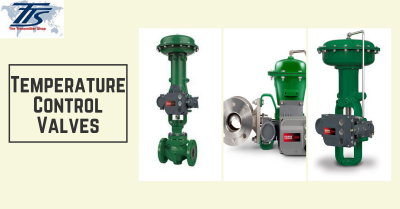How Control Valves Impact Power Effectiveness in Industrial Settings
How Control Valves Impact Power Effectiveness in Industrial Settings
Blog Article

Maximize Energy Financial Savings and Convenience With Advanced Structure Automation Controls
In the world of contemporary style and facility administration, the assimilation of innovative building automation regulates stands as an essential advancement. By taking advantage of the power of automation, structures can adapt, react, and evolve in methods that were as soon as inconceivable.
Power Efficiency Perks
Power performance advantages can dramatically lower energy usage and functional costs in structures. Energy-efficient systems, such as sophisticated building automation controls, can optimize the use of sources like home heating, illumination, and cooling, leading to lower energy expenses over time.
Furthermore, enhanced power performance can lengthen the lifespan of building tools and systems. By operating much more efficiently, heating and cooling systems, lighting fixtures, and various other structure elements experience less wear and tear, leading to decreased maintenance and replacement prices. Furthermore, energy-efficient buildings typically regulate higher building values and rental prices, offering long-term financial advantages to owners.
In addition, energy efficiency can improve owner comfort and efficiency. Properly controlled interior environments with ideal lighting and thermal conditions develop an even more favorable and positive office, causing improved staff member fulfillment and efficiency. Generally, the energy performance benefits related to innovative building automation controls are complex, incorporating cost savings, ecological stewardship, and occupant wellness.
Boosted Comfort Control
Enhancing convenience control in structure atmospheres needs an innovative integration of sophisticated automation systems for optimum resident wellness. By using innovative structure automation controls, facilities can tailor the indoor atmosphere to fulfill the specific demands and preferences of passengers. These systems make it possible for specific law of ventilation, lights, and temperature, creating a effective and comfy ambience. Resident satisfaction and efficiency are carefully connected to thermal convenience, making it necessary to have systems in place that can adjust to transforming problems in real-time.
Enhanced convenience control goes past standard temperature level modifications. It includes features such as individualized setups, tenancy sensors, and natural light usage to produce a vibrant and receptive environment. By integrating these sophisticated controls, structures can not only enhance convenience however additionally improve power effectiveness by optimizing system procedures based upon actual occupancy and usage patterns. Inevitably, prioritizing resident comfort with advanced automation systems results in an extra delightful and much healthier indoor setting.
Operational Performance Improvements

Moreover, the execution of real-time tracking and analytics devices enables structure operators to recognize energy inadequacies and operational abnormalities promptly. By continually keeping track of power usage patterns and system performance metrics, changes can be made in real-time to optimize power usage and ensure peak functional performance. control valves. Furthermore, including need action approaches into building automation controls can better enhance operational performance by dynamically adjusting energy use based on grid conditions and prices signals
Indoor Environment Optimization
Effective interior climate optimization is an essential facet of building automation controls, making certain occupants' comfort and wellness while making best use of power cost savings. By making use of advanced sensors and controls, developing automation systems can continually readjust and keep an eye on temperature, moisture degrees, air high quality, and ventilation to develop an optimal indoor atmosphere. Preserving regular and comfortable conditions not just boosts owner contentment but additionally boosts productivity and general wellness.
Interior environment optimization likewise plays a critical duty in energy performance. By fine-tuning heating, ventilation, and cooling systems based upon real-time data and tenancy patterns, navigate to this site building automation controls can significantly reduce energy consumption - control valves. For example, implementing techniques such as demand-controlled ventilation and thermal zoning can help minimize power waste while making sure that each location of the building receives the essential conditioning.

Sustainable Setting Production
Structure automation regulates not just maximize interior environment problems for power performance and occupant convenience yet also lay the foundation for producing a lasting setting via critical monitoring of systems and sources. By integrating advanced structure automation modern technologies, such as sensors, actuators, and smart software, centers can adjust and monitor energy use in real-time to reduce waste and decrease their carbon footprint. These systems make it possible for anticipating maintenance, determining prospective issues prior to they intensify and optimizing tools performance to enhance longevity and performance.
Additionally, sustainable setting development expands past power administration to incorporate water preservation, waste reduction, and interior air high quality renovation. Structure automation controls can control water use, find leaks, and make certain appropriate garbage disposal methods, contributing to overall additional hints sustainability efforts. In addition, by regulating and keeping an eye on ventilation and purification systems, these innovations boost passenger health and efficiency while reducing power consumption linked with cooling and heating operations.
Conclusion
To conclude, progressed structure automation controls offer substantial benefits in regards to energy financial savings, comfort control, functional performance, indoor environment optimization, and developing a sustainable environment. By executing these controls, structures can attain optimal performance while lowering power consumption and improving passenger comfort. It appears that the usage of innovative automation innovation is crucial in improving building performance and producing an extra sustainable future.
Energy efficiency benefits can substantially lower energy consumption and functional expenses in structures. Overall, the power effectiveness advantages associated with advanced structure automation controls are diverse, encompassing expense financial savings, environmental stewardship, and resident well-being.
Furthermore, incorporating need response strategies right into building automation controls can better enhance functional effectiveness by dynamically adjusting power use based on grid conditions and rates signals.
Building automation manages not just maximize indoor environment problems for energy performance and resident convenience but additionally lay the foundation for creating a lasting atmosphere through strategic monitoring of sources and systems.In verdict, progressed building automation regulates deal substantial benefits in terms of power cost savings, comfort control, functional performance, indoor environment optimization, and developing a sustainable environment.
Report this page